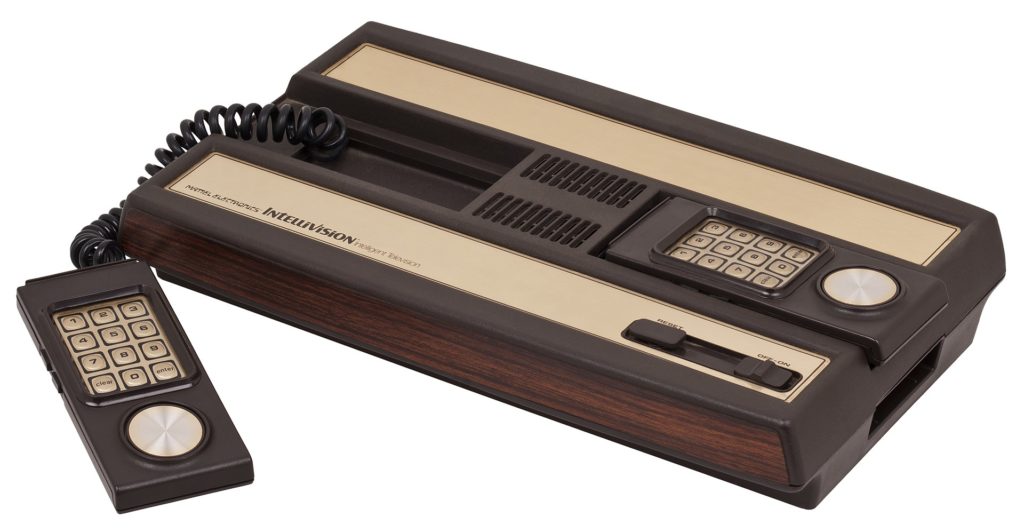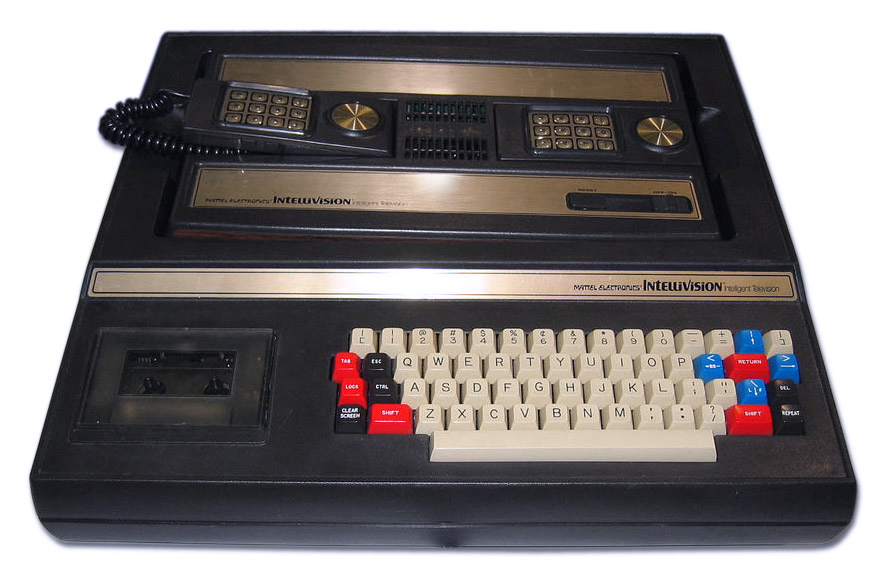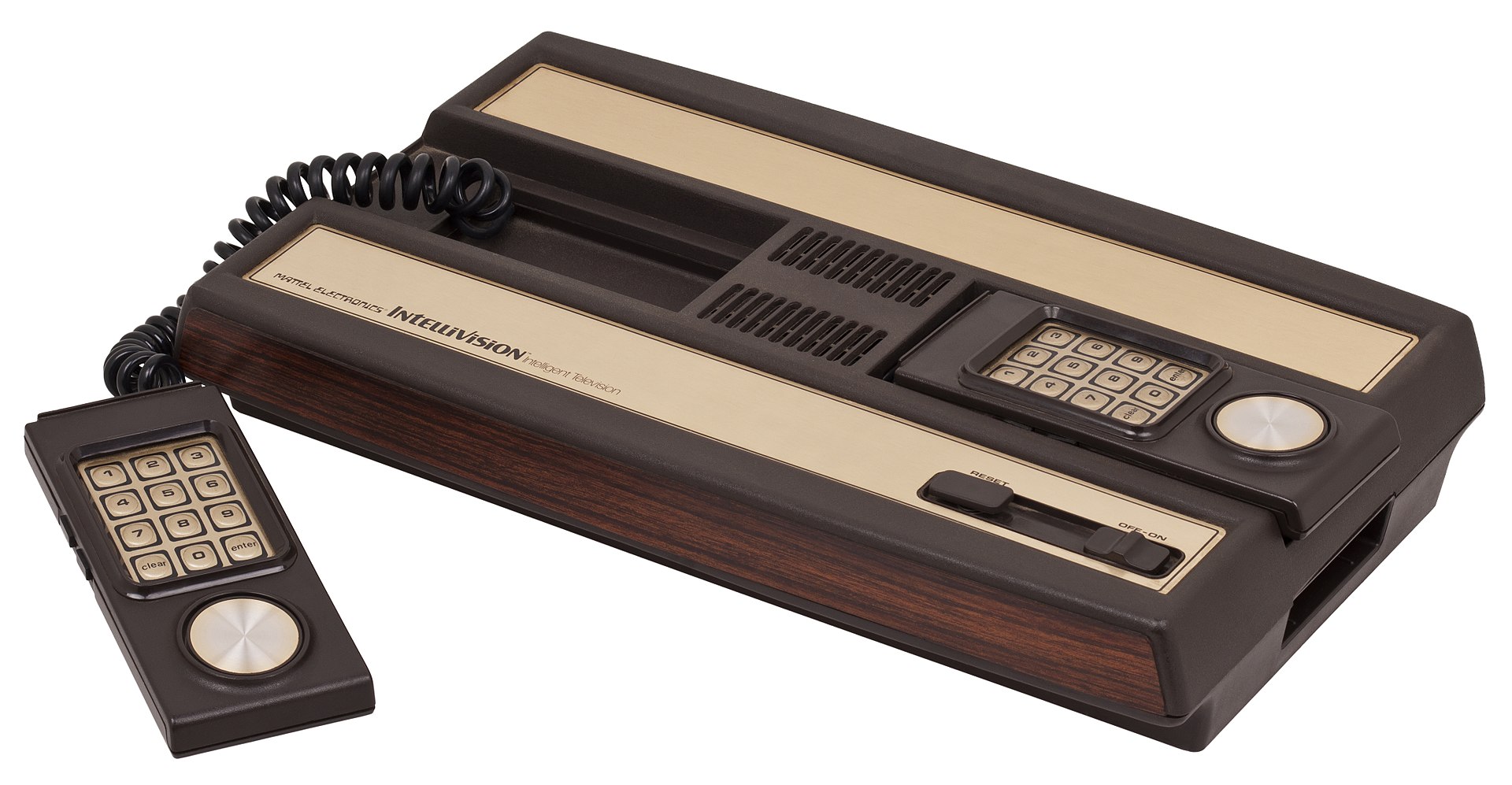Back in the 1970s, a number of electronic gaming devices rose in popularity and paved the way for video game consoles to arrive. One of those devices was Auto Race, from Mattel Electronics; a division of the company that brought you Barbie.
Auto Race was crude (do those dots even try to look like cars?) but it proved to be incredibly popular and it showed Mattel that there was a future in electronic games. They quickly followed it up with more handheld devices before deciding to take the plunge and follow Atari into the world of video games.

Work began on the Intellivision in 1977, the same year the Atari 2600 arrived in shops. Atari’s machine was exceptionally limited; with next to no in-built memory, crude sound and an 8-bit processor – yet it was very popular. Mattel knew that if they were going to beat this rival, they needed something special. Hence the Intellivision outshines the 2600 on all specifications.
Intellivision debuted with a 16-bit processor, making it the first 16-bit console; 4Kb of RAM and capacity for a 6KB ROM cartridge; a built-in operating system; and the capacity to expand the console into a full-blown computer.

The 4K of in-built RAM contains re-executable software in the operating system that cuts down on the amount of code needed in the cartridge to make a game work. This effectively increases capacity on the cartridge itself by freeing up space that would otherwise need to be used just to make a game communicate with the console; as well as making it easier for developers to code games in the first place.
As you can see from the stats, the Intellivision had it all when it comes to 1970s consoles. Mattel sold out their entire first year’s production run of Intellivision units, so they knew they were onto a success.
It may come as quite a surprise to modern gamers that the initial line-up of titles was Backgammon, Las Vegas Poker & Blackjack, Armor Battle and Math Fun but this was still the 1970s and many people still didn’t know what a video game console was, so it made sense to ease everyone into this new world of electronic gaming with a few titles that they probably already knew how to play; and it didn’t hurt to have an educational title in there as well. It always pays to give kids the “it could help with my homework” angle.
Las Vegas Poker & Blackjack would go on to be Intellivision’s best-selling title, selling 1.9 million copies by 1983, so the plan clearly worked. Mattel sought to capitalise on their early success with the core machine by introducing a number of add-on systems; the most famous these days being the Intellivoice.
Intellivoice is a speech synthesiser module that plugged into the side of the console and totally wasn’t a direct copy of Magnavox’s The Voice add-on for the Odyssey 2. It allowed for games programmed to work with it to speak in a variety of accents; most of which sound hilarious to modern ears because while it was cutting edge for the time, it’s still incredibly crude.
The Intellivoice wasn’t the only addition, of course. We’ve already seen the keyboard attachment, known as the Keyboard Component (even though it’s actually bigger than the original machine) but a computer keyboard wasn’t the only thing you could plug into this early 16-bit beast. If music was more your scene, you could get a music keyboard to attach to the Intellivision as well. They really had it all!
But the biggest innovation in add-ons has to be the PlayCable Adaptor. This device plugged into the wire from a local cable subscription service and allowed the Intellivision to download games directly into the machine via the cable service. Local cable operators could transmit this information alongside their regular cable TV programming.
PlayCable ran on an FM transmission channel and would broadcast a menu of titles that could be downloaded. The Intellivision user would select the title they wanted from the menu and the PlayCable Adaptor would re-tune its FM receiver to the channel broadcasting that title. The adaptor would then wait for the title to be fully broadcast to it, copying the data into its own memory. Once the title was fully received, it would play on the Intellivision like any cartridge game.
While it was initially capable of handling all Intellivision games (and it was, in fact, designed alongside the Intellivision console itself), the PlayCable only had 8K of internal memory; which meant it ended up being too small to cope with later, larger-sized games. Moreover, due to operating costs and high overheads, the PlayCable service was not widely adopted by local cable service providers and it died out in 1983.
Sadly, 1983 would also see the beginning of the end for the Intellivision itself. While it had initially been a big success, managing to corner 20% of the home video game market, things turned sour for everyone in 1983. Losses started to pile up and Mattel’s showing at that year’s Consumer Electronics Show was met with little applause. Mattel Electronics fired their top brass and brought in newcomers; who slashed the price of the recently-introduced Intellivision II (a cut-price but still compatible version of the original, built along the same lines that Sega would later employ for their Master System II and Mega Drive II consoles) and cancelled development of the sequel console, the Intellivision III.
Mattel Electronics then cancelled all hardware development and announced they were becoming a software manufacturer (Sega really took a lot of cues from these guys, didn’t they?). Sadly, this wasn’t a big enough move to curtail the losses. The North American Video Game Crash was continuing to build momentum and Mattel Electronics’ profits were nosediving. Nothing could stem the losses.
By the end of January 1984, all of Mattel Electronics’ programming staff were gone and Mattel sold the division for just $20 million. The new owners would continue to trade as Intellivision until 1985, when they became INTV. Despite the name change, they continued to produce consoles until 1990, when the Intellivision console was finally retired.
Intellivision may have always played second fiddle to Atari’s 2600 VCS console but it produced a number of “firsts” for the industry as well. It was the first console with a built-in operating system, which made game development far easier. It was the first console to use tile-based graphics; which allowed for far more sophisticated visuals than had been possible before (and they were certainly leaps ahead of Auto Race!). It had speech capabilities, via the Intellivoice add-on. It could become a computer (something other systems, including one from Atari, would later emulate) and it even had the first downloadable games (if your area carried the service)!
So despite the fact that its controller is awful and it really only exists because Mattel saw what Atari were doing and wanted in on the action, the Intellivision was something special. It changed gaming for the better and many of its games are still fun to play even now.
If you’re looking for something to give a try on this old machine, we at GameHammer highly recommend Pinball, Burger Time, Pac-Man and Demon Attack.
